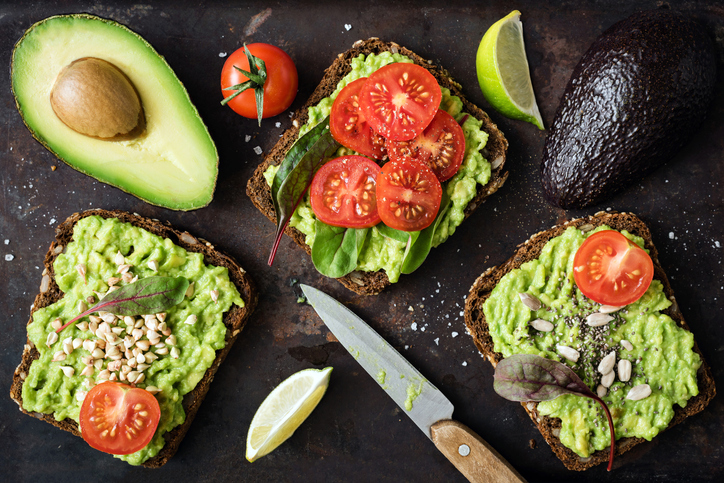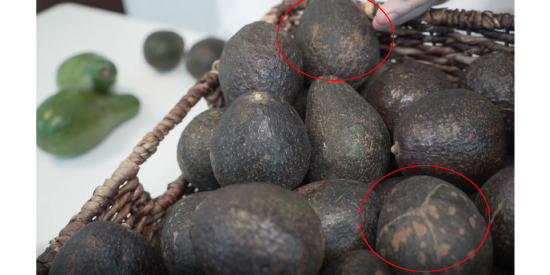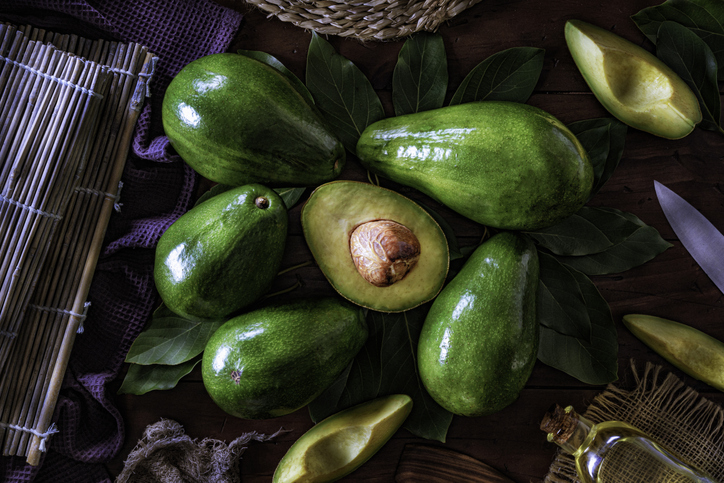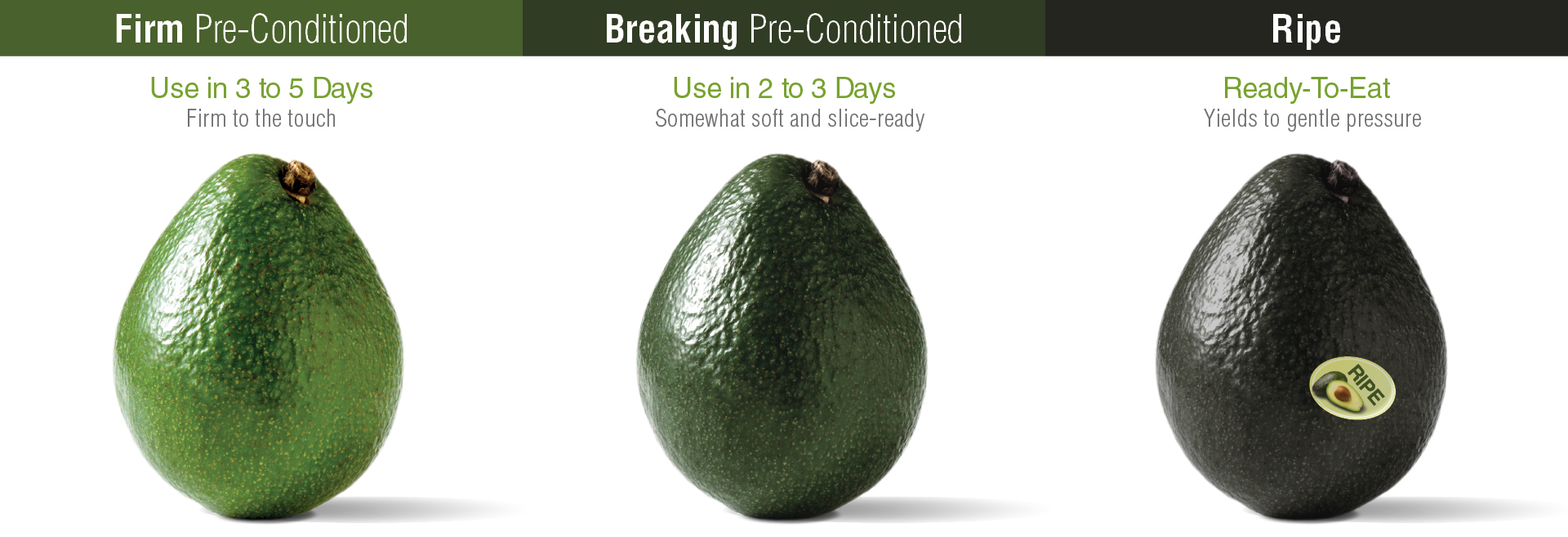
Produce 101: Avocado
Avocados often get a bad rap because they are pretty expensive fruit. In general they are, but like many fruits and vegetables, if you buy the grade according to your menu application, you may end up saving on your food cost.
Avocado are popular for a good reason: they provide healthy fats, and play a starring role in some diets, particularly Keto, as well as whole-food plant-based, vegan, and Paleo diets. Their creamy texture is essential as a substitute for dairy in desserts, salad dressings, or as a binding agent like mayonnaise.
Produce 101: Avocado Families
The three families of avocados:
- Mexican
- Guatemalan
- Caribbean or Florida
The Florida avocados are lower in fat as they have a lower oil content and a higher water content. They are also the only avocados that have a USDA grade standard.
Produce 101: Avocado Grades
Florida avocados are graded into #1, U.S. Combination, #2, and #3 grades.
The Mexican, Guatemalan and Mexican/Guatemalan hybrids don’t have a USDA spec, but they do have an industry established grading system: #1 and a #2. The grade is based on external factors only: uniformity of shape, consistency of color, and lack of scarring. As you can see here, the #1 avocados have fewer scars; whereas, the #2 avocados have more scaring.

There is a price difference between #1’s and #2’s, but there’s no difference on what’s inside. They’ll both have the same rich, buttery flesh that everybody loves with an avocado, so you may want to consider saving some money by choosing the right grade.
Produce 101: Avocado Sizes and Varieties
Avocado Sizes
Avocados come in different sizes which can be anywhere from a 32 to a 70 count. There’s even a flex-pack, and that’s simply the number of avocados per 20-pound case. So, again, like every other fruit, the lower the number, the bigger the avocado…and the bigger the price tag. So, if you’re making guacamole you may want to consider using a 70 count #2, a little bit will go a long way–and again, this is what you can do to help your food cost.
The Hass Avocado
The Hass avocado accounts for 95% of all the avocados grown in California. This avocado was developed by a postman named Rudolph Hass and it’s the industry standard–all Hass avocados are derived from his first tree.
The Hass avocado performs well, it ripens great, it grows fast, it’s just an all-around perfect avocado. There are many varieties of avocados grown, but the Hass reigns supreme due to its high oil content that results in a desirable creamy texture.
The Florida or Caribbean Avocado
Florida or Caribbean avocados are a little different. They never turn fully black when they’re ripe, they stay mostly green. They also have lower oil which translates to a lower fat content, so they’re not as rich and don’t have that nice buttery flavor of a Hass avocado. They are also larger in size, but the pit is as well.

Ripening Your Avocados
So how do you know when your avocado is ripe? In the case of the Hass avocado, the skin will tell the tale. A #1 stage (Firm) is 100% green and has no give when you apply gentle pressure to the stem end. As you let your avocados warm up–don’t store a green avocado in the refrigerator, they will never ripen–they’ll start blushing black, you’ll get less green, you’ll start to get a little give; then they’ll go full black.
At this point a little gentle pressure by the stem that yields and you know it’s ripe and ready to go. They tend to go from ripe to overripe pretty quickly once they turn dark, so use them quickly. You will also want to buy them often and rotate your inventory so you always have avocado ready to go if it is a featured menu item. If you have some that are going to become overripe before you can use them, they freeze well. Peel them, remove the pit, and cut into chunks or process before freezing.

Proper Avocado Storage
You don’t want to get your avocados too cold, they will show some chill damage. Sometimes when you cut an avocado, you’ll see spots in it, little dark spots. This could mean it is a late season fruit that may have been held on to a little too long. More than likely, it’s chill damage, but just scoop the dark spots—it doesn’t affect the rest of the quality or flavor of the avocado.
Watch Dan go over Produce 101: Avocado
Contact your Sales Consultant about adding avocados to your next order. If you are not a customer, find out how to become one today!
Content provided by Chef Daniel Snowden, the Director of Culinary Development for FreshPoint Central Florida. He has been in the produce industry almost 20 years and loves getting geeky about food.
Some tools you can use:
Visit freshpoint.com for our seasonal availability guides—and while you are there, check out the FreshPress, our latest market report. Place your orders online with ease at myfreshpoint.com. Did you know you can receive real-time reliable delivery alerts on the day of your delivery? Activate and subscribe at FreshPoint.com/mydelivery
Download our app and take your produce management on the go. Place orders, review flyers, watch videos…all in one spot!
Find out more details about our UBU program, and how we are shining a spotlight on food waste while making value and food safety a priority.
We buy local to strengthen regional economies, support family farms, preserve the local landscape, and to provide fresh-from-the-farm food to our customers. Local.freshpoint.com connects you to your local farmers like never before! Customize your search by zip, city, state, radius…even by crops and growing methods. Pop in your zip code and learn about our local farmers.
Socialize with us!
Did you know we are on YouTube? Head over to our page and check out our 75+ videos. Don’t forget to subscribe, and also be a part of our Bell Team—hit the little bell icon to get notifications when we upload new videos.
Follow FreshPoint, Inc. on Facebook, Twitter, Instagram, and LinkedIn…and follow The Produce Hunter on Instagram as she finds the best specialty produce at the Santa Monica Farmers Market.

